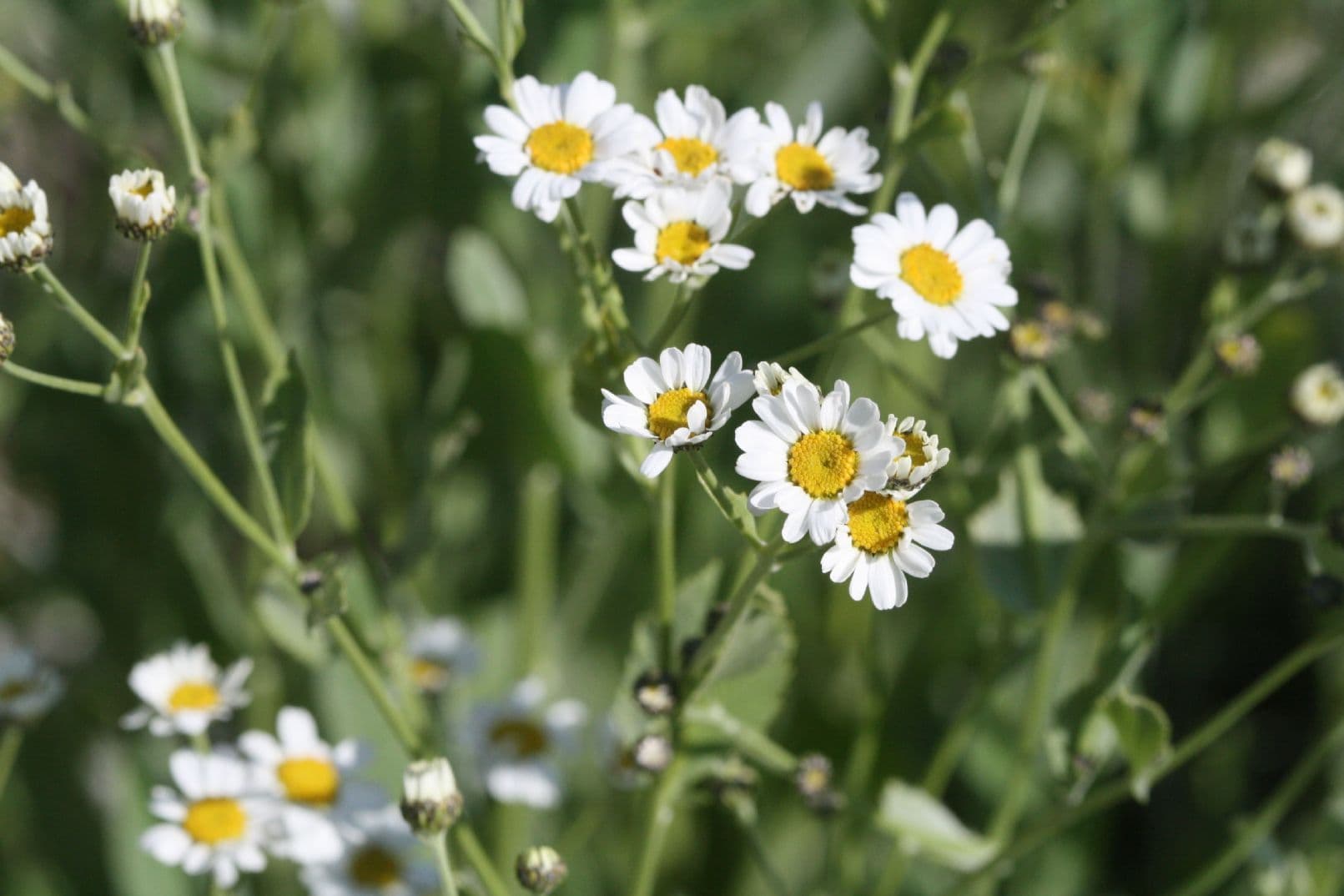

Tanacetum balsamita, or Balsamita vulgaris, is a perennial temperate herb known as costmary, alecost, balsam herb, bible leaf, or mint geranium.
“The costmary is a perennial with oval serrated leaves and can grow up to 2 meters high. During summer it has small white daisy flowers with a yellow centre, which appear in clusters. The leaves appear silvery. It is related to Tansy, but is not so invasive.
The English name costmary stems from ‘costus of Saint Mary’, costus being an oriental spice root that this plant was used as a subsitute for in Europe. It is associated with the virgin Mary, most probably because it is sometimes used to cure women’s diseases. It’s other name ‘alecost’ comes from its use in flavouring beer before hops were introduced for this purpose.
The plant seems to have originated in the Mediterranean. It is unclear whether the plant called “balsamita” described by Columella in 70 AD is the same. According to Heinrich Marzell, it was first mentioned in 812 in a plant catalogue. Costmary was widely grown since the medieval times in herb gardens until the late 19th and early centuries for medical purposes. Nowadays it has mostly disappeared in Europe, but is still widely used in southwest Asia. It was used in medieval times as a place marker in bibles. It is referred to by Nicholas Culpeper as the ‘balsam herb’.
In medieval times, costmary was used for menstruation problems. In the 18th century, it was classified as laxative, against stomach problems and as astringent. It was recommend against melancholy and hysteria as well as dysentery and against gallbladder disease.[1] Leaves of the plant have been found to contain a range of essential oils. A Spanish study found the oil includes carvone as the main component (51.5%, 41.0% and 56.9% in three samples), together with minor amounts of beta-thujone, t-dihydrocarvone, c-dihydrocarvone, dihydrocarveol isomer c-carveol and t-carveol. It is noteworthy that levels of beta-thujone, a toxic ketone, were 9.8%, 12.5% and 12.1% in the respective samples. [2]
The plant is known from ancient herbals and was widely grown in Elizabethan knot gardens.
Nicholas Culpeper says of costmary: It is under the dominion of Jupiter. The ordinary costmary, as well as maudlin, provokes urine abundantly, and softens the hardness of the mother; it gently purgeth choler and phlegm, extenuating that which is gross, and cutting that which is tough and glutinous, cleanseth that which is foul, and prevents putrefaction ; it openeth obstructions and relieves their bad effects, and it is beneficial in all sorts of dry agues. It is astringent to the stomach, and strengtheneth the livers other viscera : and taken in whey, worketh more effectively. Taken fasting in the morning, it relieves chronic pains in the head, and to stay, dry up, and consume all their rheums or distillations from the head into the stomach, a much to digest raw humours gathered therein, It is profitable for those that are fallen into a continual evil disposition of the body, called cachexy, especially in beginning of the disease. It is good for weak and cold livers. The seed is given to children for worms, and so is the infusion of flowers in white wine, about two ounces at a time. It maketh an excellent salve to heal old ulcers, being boiled with oil of olive, and adder’s tongue with it; and after is strained, put in a little wax, rosin, and turpentine to make it as thick as required.”
from Wikipedia